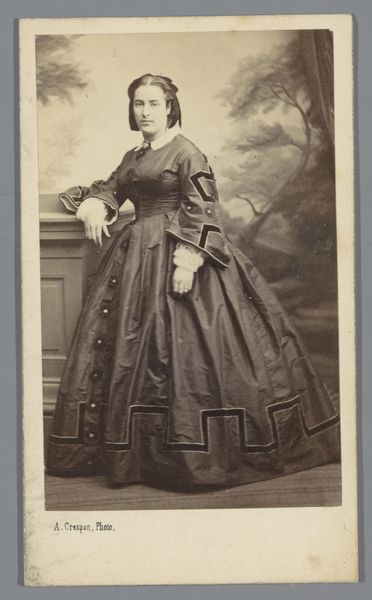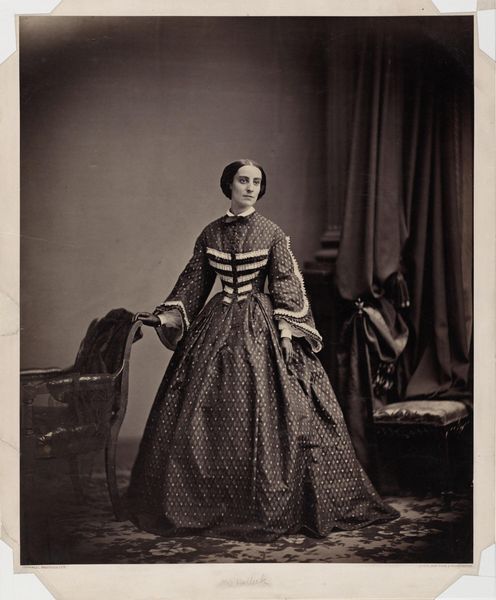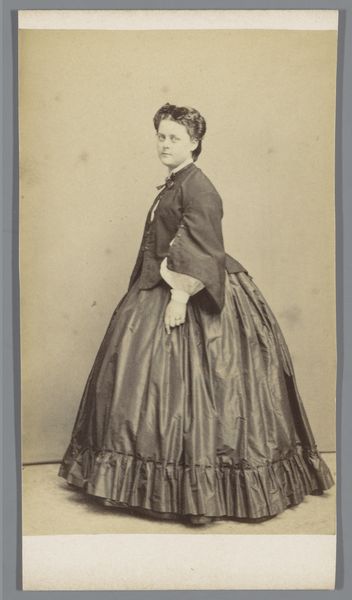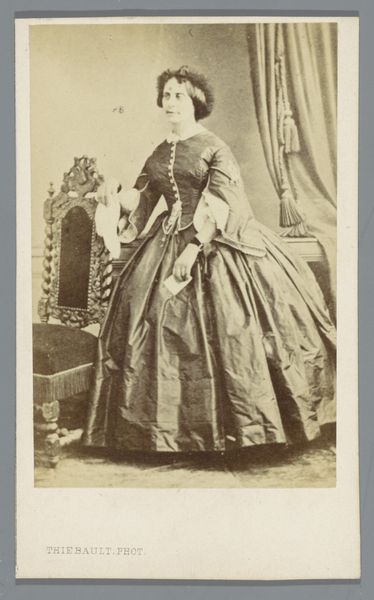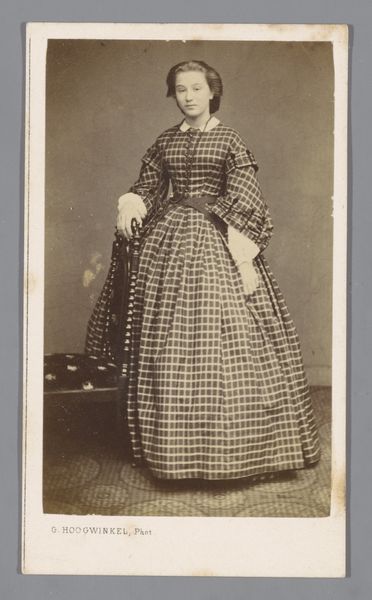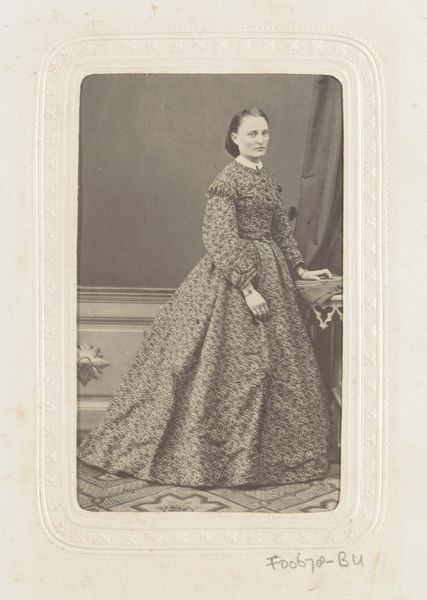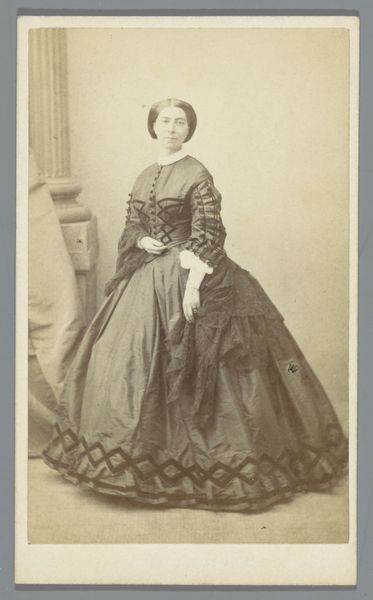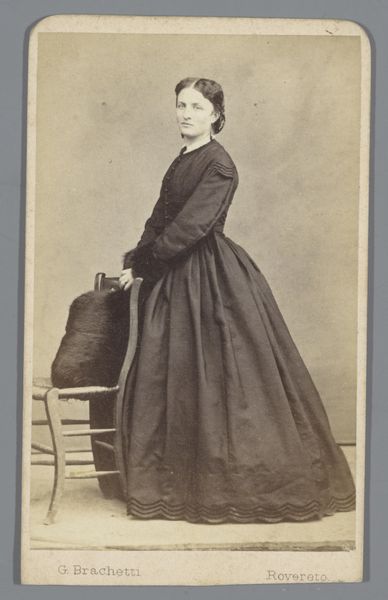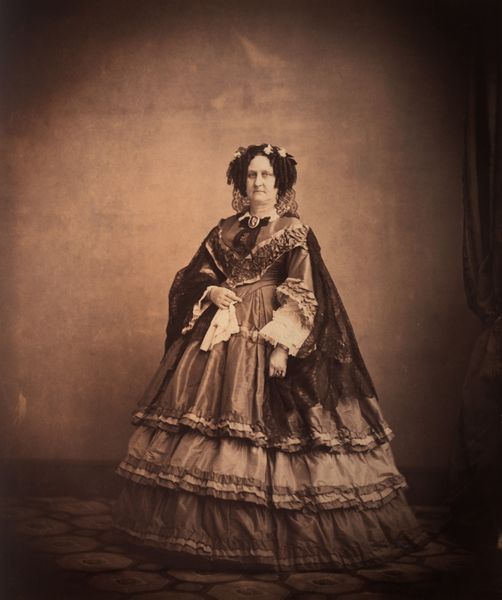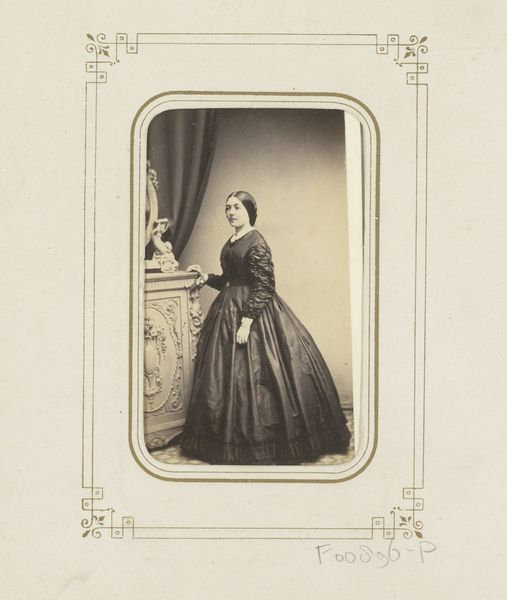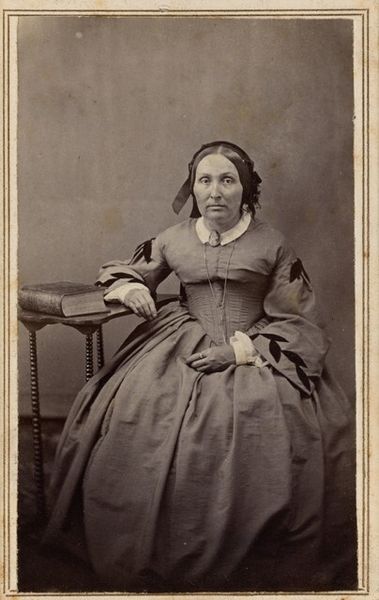
Dimensions: image/sheet: 9.5 × 5.7 cm (3 3/4 × 2 1/4 in.) mount: 10.1 × 6.1 cm (4 × 2 3/8 in.)
Copyright: National Gallery of Art: CC0 1.0
This portrait of Olive Oatman was made by Benjamin Powelson, using the wet collodion process, which dominated photography in the mid-19th century. To make the image, a glass plate would have been coated with chemicals, exposed in the camera while still wet, and then developed immediately. It's a process demanding speed and precision, connecting photographic practice to industrial modes of production. Think about the labor involved in the textile production of her dress: the spinning, weaving, dyeing, and the skilled sewing required for the elaborate design. The cumulative effort is considerable. Yet Oatman's face bears witness to a different kind of labor. The tattoo on her chin, made by the people of the Mojave tribe, tells a story of captivity and integration into another culture. Ultimately, this photograph prompts us to consider the many layers of work and cultural exchange embedded within its surface, and to question the assumed divide between the fine arts and the crafts and lived experience.
Comments
No comments
Be the first to comment and join the conversation on the ultimate creative platform.

